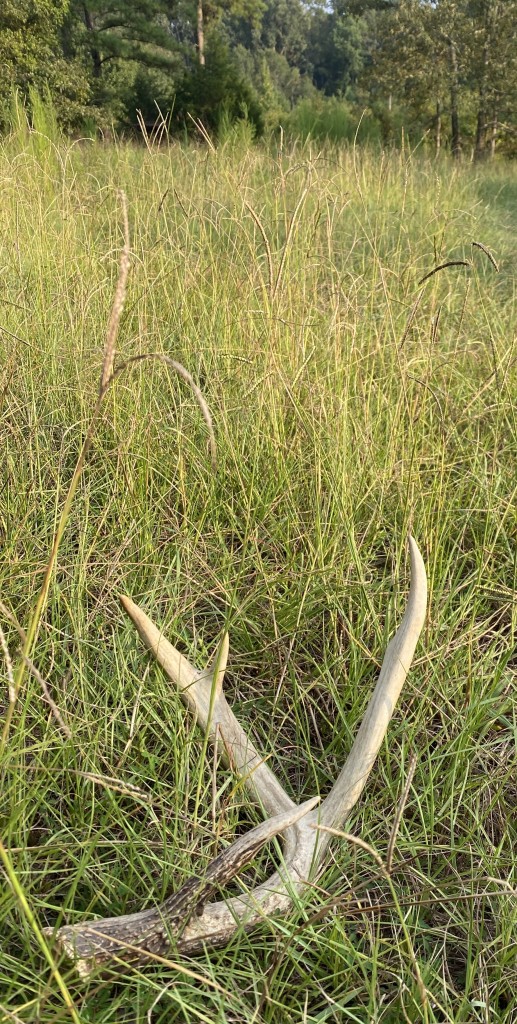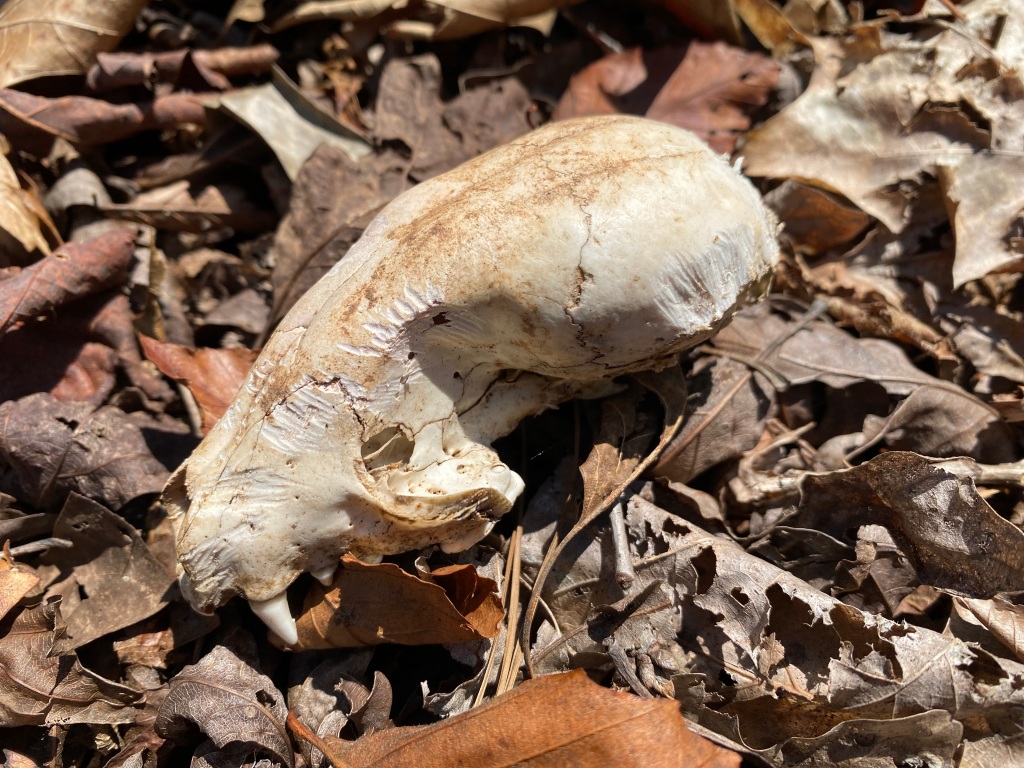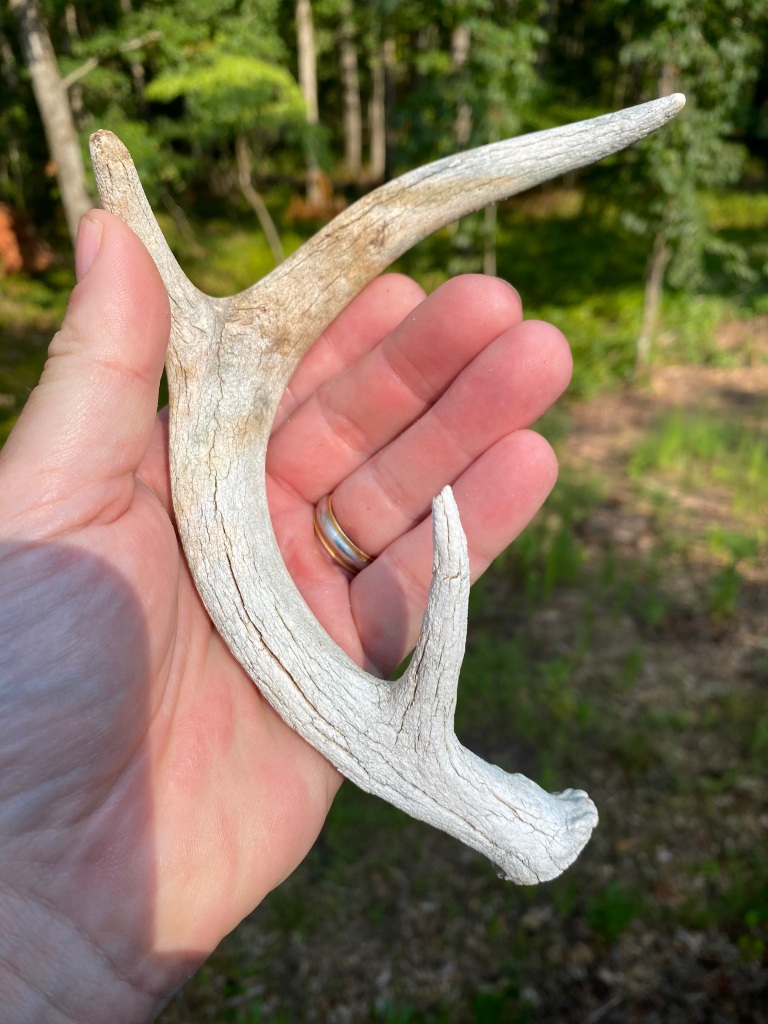“You can’t eat the antlers.” It’s a way of saying to hunters that obsess over taking the buck with the largest rack that a doe will probably be tastier, and certainly more worthwhile to the meat hunter. But while the phrase is true for you and me, there are exceptions.

Bucks shed their antlers every winter and start growing a new set the following spring. With well over half a million male white-tailed deer in Georgia, there are bound to be considerable numbers of shed antlers on the ground by spring green-up. Those that escape shed hunters threaten to pop the tires of tractors and ATVs. Year after year, more pairs of antlers hit the ground. So why aren’t fields and forests carpeted by pointy bone caltrops? Critters, that’s why.
Like all bones, antlers contain a lot of calcium, phosphorus, and other minerals – which are scarce or lacking in the local vegetation. Ingested bits of bone are like mineral supplements, providing raw materials to build bone and muscle.
Squirrels, mice, and other rodents are some of the big culprits at bone eating. This makes sense when you consider that the teeth of rodents and lagomorphs (rabbits and hares) never stop growing. Gnawing hard bone wears down teeth, which if left to grow too long cause serious health issues. At the same time, ingesting the powdered antler provides the rodents with the minerals for rebuilding the teeth!

Non-rodents can join in; coyotes, raccoons, and even deer have been seen chewing on antlers and other bones. As most adult mammals don’t have regenerating teeth, this practice is not as beneficial for the fox as for the squirrel.
Bone-gnawing is not reserved for antlers. Each animal that dies above ground leaves bones that will likely be chewed on before the remains weather away.

The next time you find a bone in the woods, take a moment; look to see if some forest creature has snacked on them. You’re looking at natural recycling made manifest.


You must be logged in to post a comment.